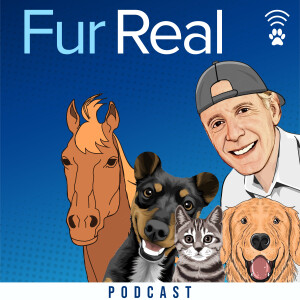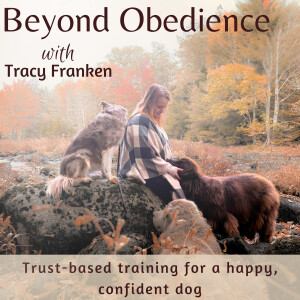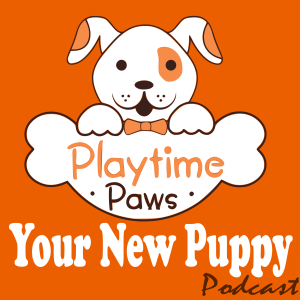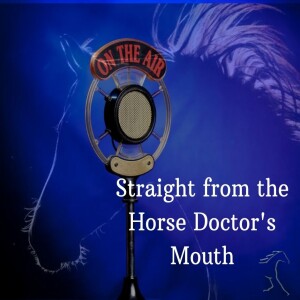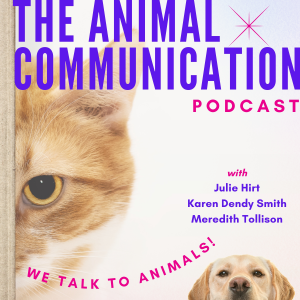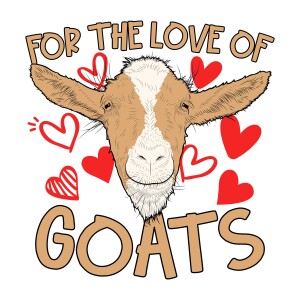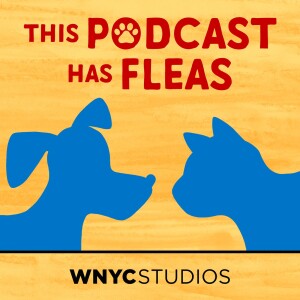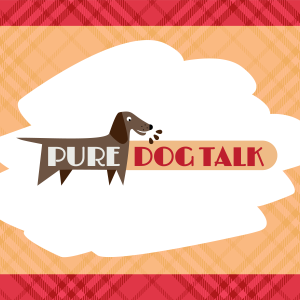

Episode List

698 – Three Words That Strike Fear in Vets and Owners
Three Words That Strike Fear in Vets and Owners Host Laura Reeves is joined by Dr. Marty Greer talking about the three words that strike fear in both veterinarians and owners. “These three things are what can take a normal, easy, lovely day at the veterinary clinic and turn it upside down and cause clients to have to wait and then swear at their veterinary team because they don't understand why they have to wait because they had an appointment,” Greer said. Those three words, according to Greer, are GDV (bloat), Pyo (pyometra) and HBC (hit by car). Refresher on these three critical care situations: Pyometra is a uterine infection. “Fevers are almost never seen with pyometras,” Greer said. “And it's a hard thing to understand how you can have a uterus full of pus and not run a fever. But apparently the uterus is a privileged organ and it allows for foreign things to happen in it. That could be a pyometra. That could be a puppy. “So unfortunately, they almost never run a fever, so don't rely on that to be a symptom. If you were waiting for a fever to happen, it means that the uterus probably just ruptured and the dog now has a belly full of puss instead of just a uterus full of puss. And when your belly is full of puss, you're in big trouble. And so, if you're waiting for a temperature, you're decreasing your dog's odds of survival. “If your dog was recently in heat, they aren't feeling well, they're not eating well, they're perhaps drinking buckets and buckets of water, maybe vomiting, maybe have a vaginal discharge, maybe not. Do not wait for a fever (to take the dog to the vet).” GDV (gastric dilatation and volvulus) is bloat, where a dog’s stomach fills with air and may twist, causing a very rapid cascade of life-threatening events in the dog’s system. HBC (hit by car) and other trauma is covered in our K9 911 First Aid seminar series linked here.

697 – Dog Breeding as a Vision Quest
Dog Breeding as a Vision Quest Host Laura Reeves is joined by NYT best-selling author David Wroblewski discussing dog breeding as a vision quest. Wroblewski is the author of The Story of Edgar Sawtelle and Familiaris both based on the life and history of fictional dog breeder Edgar Sawtelle and his family. “This sort of primal connection that we have with dogs, to me fundamentally is about how to live a larger, better life in a really broad sense,” Wroblewski said. “One of the things that you mentioned, kind of like in the theme of the novels, is the importance of creating something lasting and beautiful in the world. The idea that you're pursuing one impossible thing,” Reeves said. “And let me tell you, as somebody who has been breeding dogs since I was a child with my family and still am today, that basically defines our life. So talk to us a little bit about how you came to that and how you incorporated that into your novels.” “I think that there's only a couple of things that are worth writing about in the larger sense and one of them is love,” Wroblewski said. “And so I would hope that everything that I write is at some level and hopefully multiple levels a love story. But one of those love stories is the love of what you're trying to do in the world with your life. “I mean, we all need to pay the bills. There are plenty of things that are just functional things about day-to-day living, but there's also the larger meaning of what you're doing with your life. And I've been lucky to have to work with people in a number of different realms that are lucky enough to be able to say I'm not just trying to pay the mortgage. I'm trying to do something bigger than just me. “And one of the things that readers of Familiaris will run across partway through the book is a sort of accounting of this couple, John and Mary Sawtell. Familiaris is about this history of this kennel where everything takes place later for the Story of Edgar Sawtelle. But just an accounting of how all the work that they've done over the course of 40 years of raising dogs and placing them in the world, how that has accumulated and what the net effect across all human society has been. I feel like every time a dog gets placed with a thoughtful owner, that person's life has been changed forever.”

696 – Swedish Lapphund and the Genetics of the Arctic Spitz Breeds
Swedish Lapphund and the Genetics of the Arctic Spitz Breeds [caption id="attachment_14251" align="alignleft" width="540"] Desiree Ramirez with one of her Swedish Lapphunds.[/caption] Host Laura Reeves is joined by Desiree Ramirez to discuss the Swedish Lapphund and the genetics of the arctic spitz “archetype” that developed into landrace dogs and then different breeds over centuries. Swedish Lapphunds are not Finnish Laphunds or Finnish Spitz or Norwegian Buhunds or Norwegian Elkhounds or Samoyeds or Karelian Bear Dogs. Currently registered by AKC in the FSS, there are only about 40 dogs in the US. They are their own unique breed developed in the same region of the Scandinavian countries by the Sami people of Lappland (northern Norway, Sweden, Finland and northwest Russia). But these breeds all developed in the same basic region of the world. “We have archeological evidence of these lap -ish dogs going back four to 8 ,000 years,” Ramirez said. “Like some of the first dogs in Scandinavia and Europe. They were the landrace archetype. “And these dogs all are in haplogroup D and specifically when we talk about genetics specifically subclade group D1. Now haplogroup D is the most recent haplogroup in dog genetics that has the most recent wolf ancestry, barring any, you know, modern wolf mixes that we have. It is the most recent dog breed, dog type with wolf ancestry. [caption id="attachment_14250" align="alignright" width="536"] Swedish Lapphund puppy.[/caption] “That's why a lot of these dogs are these spitzy. That's why they looked so wolfy, they have a lot of those holdover traits because they're so close. Subclade Group D is specific to these Scandinavian breeds. So you're Finnish Lapphund, your Swedish Lapphund, Lapponian herders, all the elk hounds, they're all coming from that one subclade D. “(One) thing that makes them really different (from the Finnish Lapphund). This is where they really shine between the two of them is their temperament. OK, Swedish Lapphunds are a little bit more drivey. The first comparison I ever heard between the two of them was it's like comparing a V6 and a V8 engine. “The Swedish Lapphund is just going to drive and push and they really want to work, but they're the ones that will turn around and look at you in the yard and be like, OK, what are we doing next that? The handler focus that they have is extreme. They're always looking for you for that next thing that you want to do. “The Swedish Lapphund or the Lappish dogs were from the Sami people. And these dogs had to be versatile. They had to do everything. So hunting, herding, guarding, keeping the people warm, they had to do it all. There was no ability to specialize, right, if the owner needed it, that dog was doing it. “And to this day they still like to have a variety within the litter. So you might have a dog that's really good at hunting, which we still have dogs hunting and you might have one that herds and you might have one that is really just a great couch potato and they love that. They love that versatility and variety of temperament within the breed.”

695 – The Tiny but Mighty Chihuahua with Kristi Green
The Tiny but Mighty Chihuahua with Kristi Green [caption id="attachment_14231" align="alignleft" width="416"] Kristi Green with BIS MBISS GCHG CH Knockout Pretty Little Liar.[/caption] Host Laura Reeves is joined by Kristi Green, talking about the tiny but mighty Chihuahua. From their slightly mysterious origins to best practices on finding and raising a well-bred dog, Green shares pro tips from her own successes and struggles. “I think that the biggest part about living with a Chihuahua is that they can be as good of a dog as you want them to be or as bad of a dog as you let them be,” Green said. “There's a lot of user error and really successful users, for lack of a better word, I hear people say that you know, they're truly trying to bite somebody and I think ‘mine don't do that.’ “I've had a lot of Chihuahuas come and go throughout my process. And, and how you handle them in certain situations really, really has a lot to do with the dog that you have. What you put in is what you get out. But just day-to-day life with them, they're wonderful dogs. You've got this little dog that thinks you hung the moon and the stars, whether you barely got out of bed that day or you solved World Peace. They love you no matter what. And that really is part of their charm. “It really has become the gold standard in Chihuahuas now that you do health test the dogs. That really has changed over the last 15 years since I started, and I think that that's important. Look for a breeder that's not just ohh, my dogs are healthy, they've been health tested, but that they're putting those dogs in the database because it says they care about the big picture, not just selling puppies, but they care about what happens in 15 years when somebody wants to learn about a pedigree. “A Chihuahua that's going to be a good pet really has been home raised. You know, they've been raised in your house. They've been raised under foot. They've been exposed to just life in a house. They also have been socialized. I think it's a good idea to ask the question of, you know, what do you do to socialize the puppies? How are the puppies potty trained? I mean, are you doing anything as far as those things go, because that early framework really does make a big difference as far as how the dog handles life for the next 15 years.” Read more in our 2018 blog post interview with Green HERE.

694 – What’s Your “Line in the Sand” for Breeding
What’s Your “Line in the Sand” for Breeding Host Laura Reeves is joined by Dr. Marty Greer for an important conversation about “what is YOUR line in the sand” when breeding dogs. This is a conversation around breeding ethics and having a “mission statement” for your breeding program. “I had a listener ask about a baby puppy with one testicle yoyoing and one maybe, maybe not there and what should they do? And Marty said, ‘Well, there's only a couple things and it won't take very long (to talk about), but I think that there's no reason not to breed that.’ And I'm like, wait, what? So, Marty, I want you to talk to me about why, because this was a very interesting perspective that had literally never crossed my mind.” The conversation continues from there with Marty describing her “line in the sand” as deadly diseases. Her reasoning being the additional genetic diversity that comes when we don’t “throw out the baby with the bath water” for issues which do not actively impact a dog’s quality of life. “The world according to Marty Greer is for me a level 1 is something that you don't have a life shortening, life altering disease from. It's a retained testicle. For me it's extra eyelashes. For me it's an entropian. For me, it's an umbilical hernia. “For me, level 2 is something that requires chronic management, long term allergies. Thyroid disease, things that always need to be on medication. There's an ongoing expense. There's an ongoing thing that has to happen, but it's not serious. “And for me, Level 3, are life threatening, life altering, life shortening diseases. This is my definition. For me, that's bad temperament. If your dog bites somebody, I don't think that dog should be in your gene pool. If I have to muzzle your dog to breed it, I don't think it should be in the gene pool. That for me is orthopedic diseases that are crippling. Hip dysplasia, elbow dysplasia, patellar luxation, all this stuff that happens orthopedically. And for me that's things like seizures, because I think seizures are life threatening. “But that's my world. I live in a veterinary clinic. Remember, that's what I do every day. So I see dogs that come in with owners that are distressed, dogs that are dying, dogs that need to be euthanized. And so my perspective is going to be different than other people's perspectives because that's not the world they live in.”
You may also like
Create Your Podcast In Minutes
- Full-featured podcast site
- Unlimited storage and bandwidth
- Comprehensive podcast stats
- Distribute to Apple Podcasts, Spotify, and more
- Make money with your podcast

